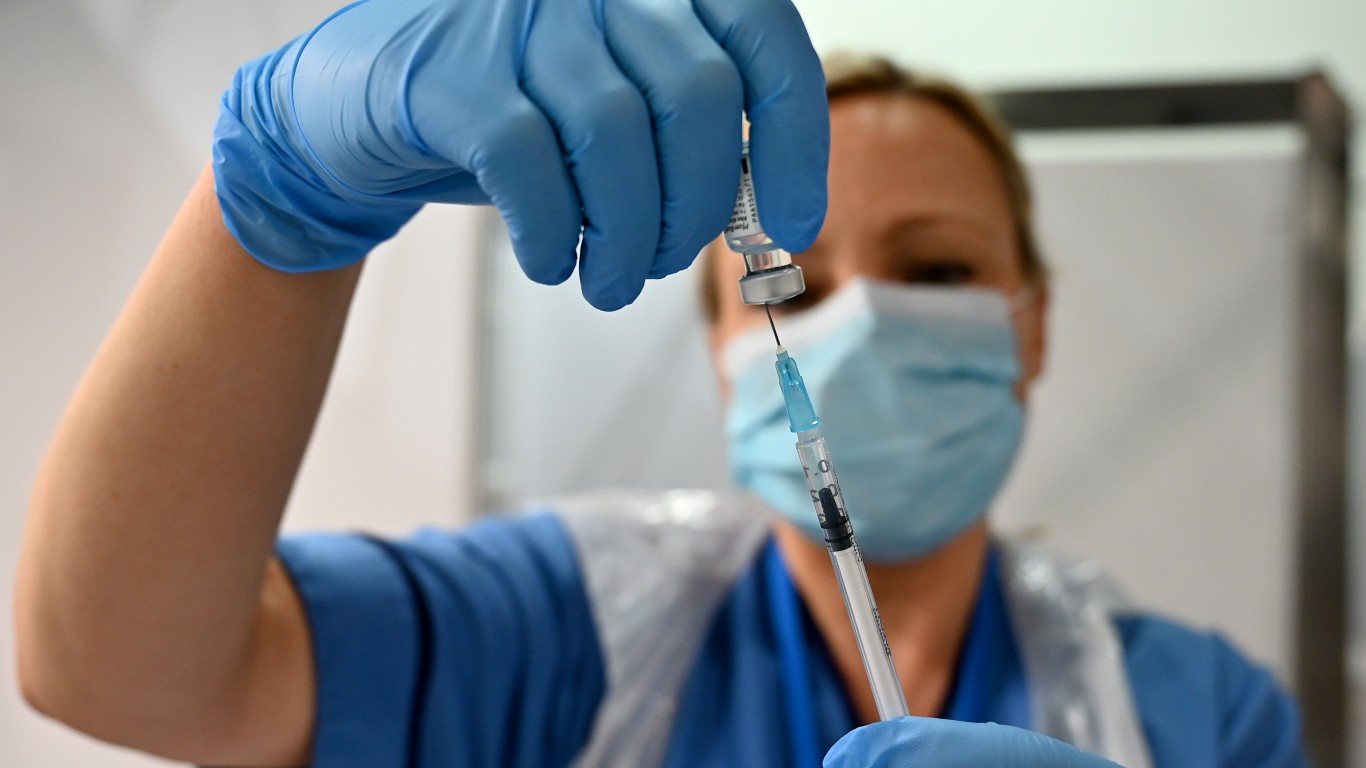
Nationwide, 207.7 million people, or 62.5% of eligible U.S. residents age 5 or older, were fully vaccinated as of Jan. 9, according to the Centers for Disease Control and Prevention’s COVID Data Tracker. More than 75 million, or 36%, received a booster shot.
Although the percentage of people receiving two doses of the mRNA vaccine or one jab of the single-dose vaccine is encouraging in the fight against the viral disease, it still leaves almost 40% of the U.S. population without any protection against COVID-19, or with the reduced protection that only one dose provides. Less encouraging is the relatively low percentage of those receiving the much recommended booster shot.
Numerous public sentiment surveys have tried to uncover the reasons behind the lack of vaccine take-up in a large portion of the population. A recent one pointed to income level as one possible factor in lower vaccination rates.
To determine who is and is not getting vaccinated by income, 24/7 Wall St. reviewed the U.S. Census Bureau’s Household Pulse Survey. The survey gathered data on the vaccination status of Americans who are 18 and older based on a number of characteristics, including household income. For each income level, the survey reported total population as well as totals for different vaccination status. We calculated the percentages of those unvaccinated, those who received at least one dose and those with three or more doses.
Taken over a two-week period ending Dec. 13, 2021, the survey also gathered data on the reasons why people said they are not going to or not planning to get the vaccine. Check out the 13 reasons people aren’t getting vaccinated.
The survey highlights the correlation between income and vaccination status. The higher the income level the more likely the person will be vaccinated. Conversely, as household incomes decrease, the unvaccinated percentage rises.
At the highest income level noted in the survey — $200,000 and above — the vaccination rate stands at 94.2% with at least one dose, with 54.3% with three jabs. A scant 5.5% are unvaccinated.
The unvaccinated rate rises nearly four-fold to 20.6% for those making less than $25,000. While nearly 80% of the population at that income level received one dose, less than a quarter had all three jabs — less than half the level at the highest income bracket.
Although questions about possible side effects and mistrust of the government as well as the vaccine itself ranked in the top three spots for vaccine-hesitancy, 1.9%, or 651,339 respondents, said cost concerns kept them from getting the jab.
What’s surprising is the fact vaccines are free, so in theory, how much a person makes shouldn’t prevent them from getting a dose. But there could be other financial reasons beyond just the cost of the shot. People must take time off from work to get the jab, and lower-income workers might not want to lose a day’s pay.
Could giving lower-way workers a paid day off for the jab boost the vaccination rate? A survey done over the summer by the Kaiser Family Foundation suggests so: Some 73% of workers whose employers support the vaccination or offer paid time off reported getting at least one shot. In those workplaces less encouraging of vaccines or that don’t offer paid time off, the percentages fell to 41% and 51% respectively.
Perhaps reimbursing workers for a day’s pay for getting the vaccine could boost the vaccination rate and mute the spread of the virus. (See: COVID-19: These are the states fighting it most successfully.)
Click here to see who is and who isn’t getting vaccinated by income
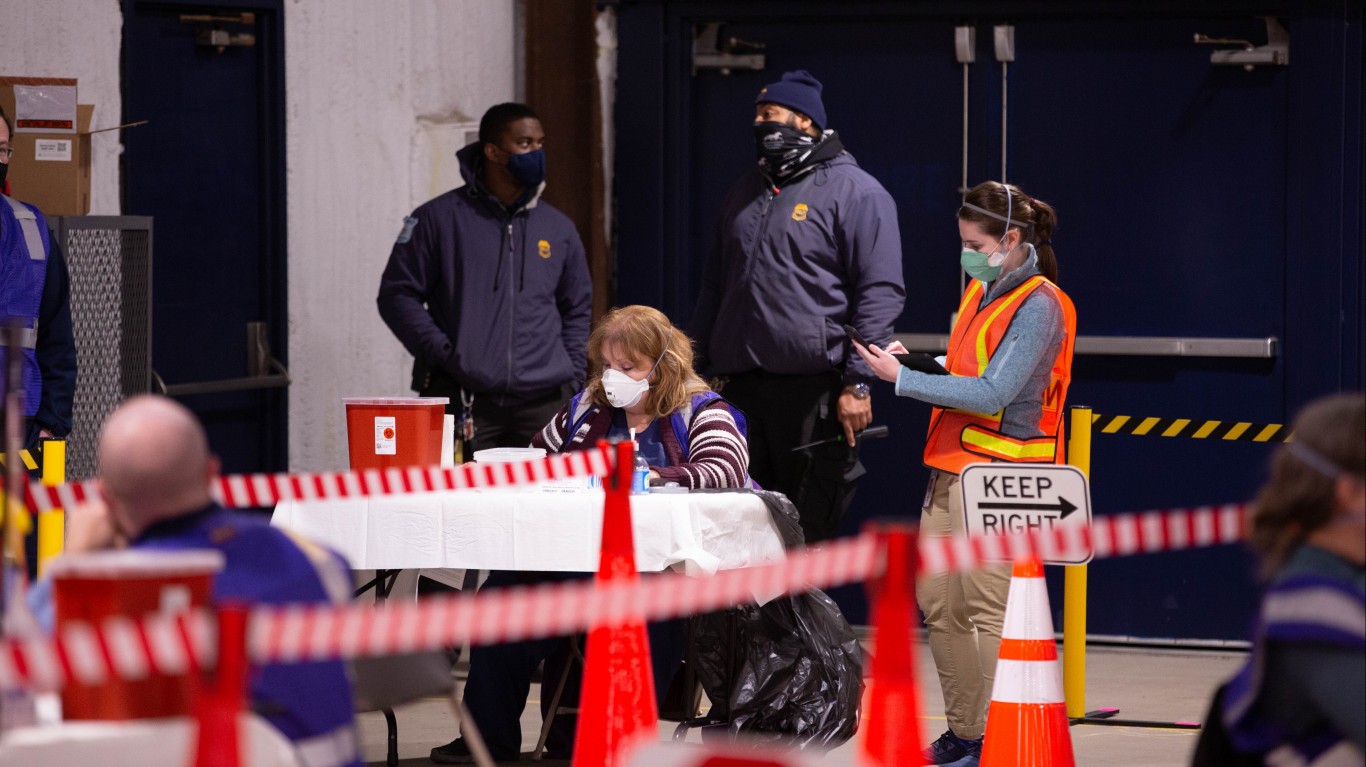
9. Household income: Did not report
> Pct. unvaccinated: 20.8% (Estimated total: 13,134,128)
> Pct. with at least one dose: 75.2% (Estimated total: 47,393,061)
> Pct. with three or more doses: 23.4% (Estimated total: 14,778,960)
[in-text-ad]
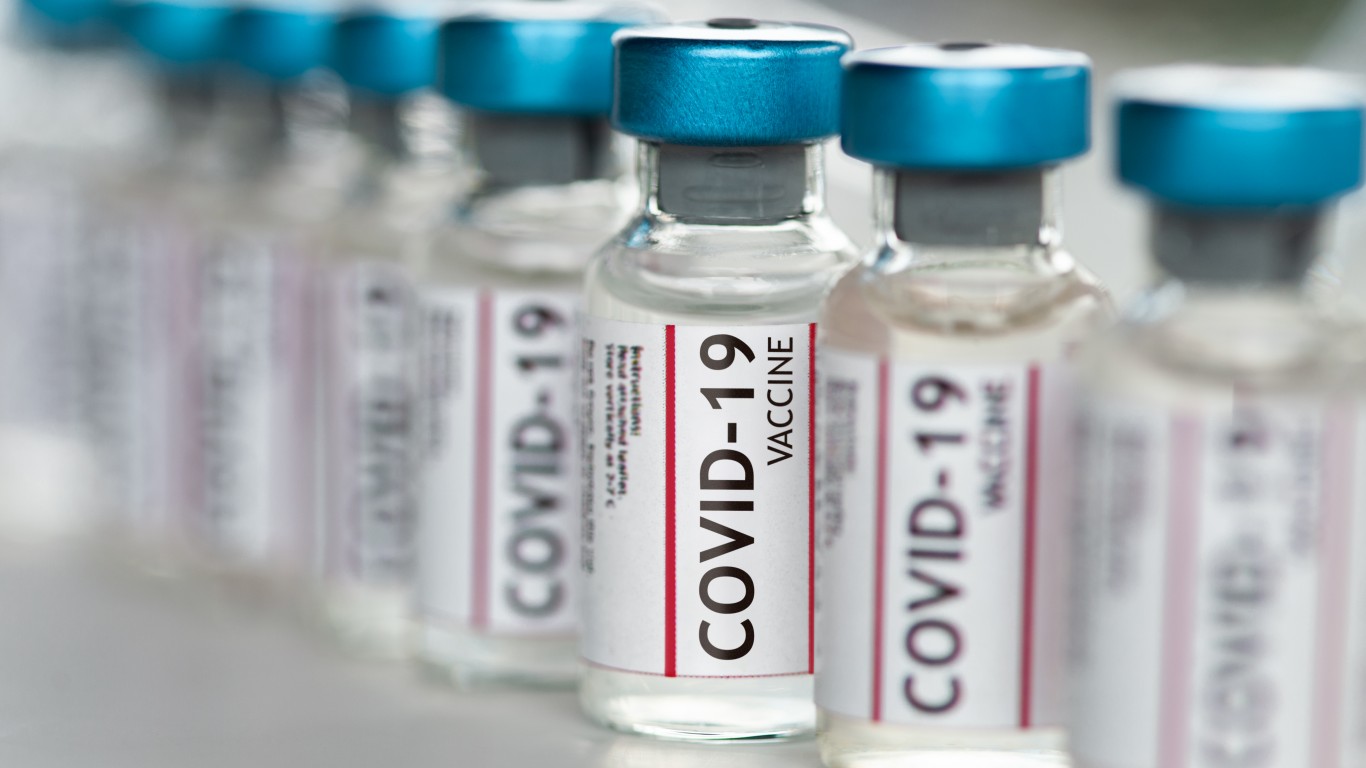
8. Household income: Less than $25,000
> Pct. unvaccinated: 20.6% (Estimated total: 6,234,631)
> Pct. with at least one dose: 78.9% (Estimated total: 23,846,321)
> Pct. with three or more doses: 21.5% (Estimated total: 6,499,215)
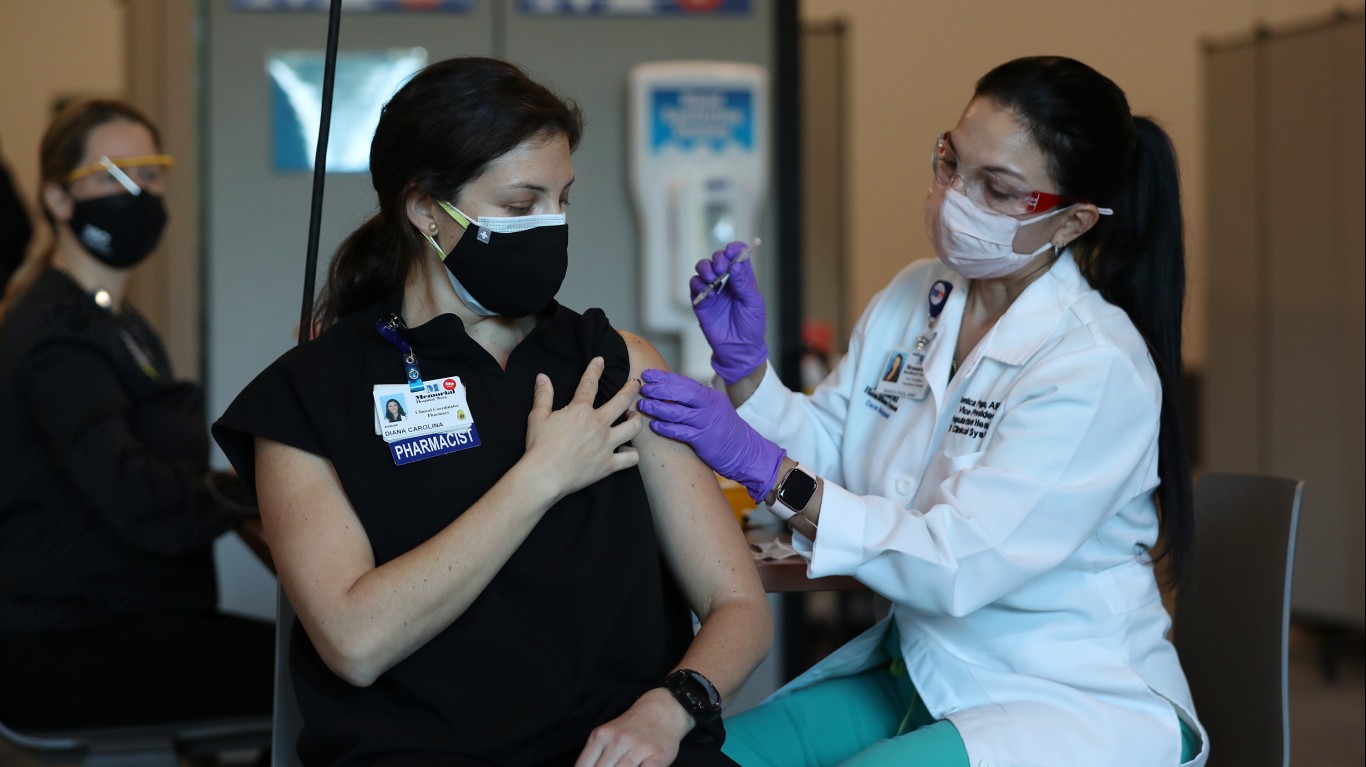
7. Household income: $25,000 – $34,999
> Pct. unvaccinated: 17.1% (Estimated total: 3,737,885)
> Pct. with at least one dose: 82.7% (Estimated total: 18,130,192)
> Pct. with three or more doses: 26.5% (Estimated total: 5,810,628)

6. Household income: $35,000 – $49,999
> Pct. unvaccinated: 15.0% (Estimated total: 3,536,867)
> Pct. with at least one dose: 84.6% (Estimated total: 19,976,656)
> Pct. with three or more doses: 29.7% (Estimated total: 7,011,207)
[in-text-ad-2]
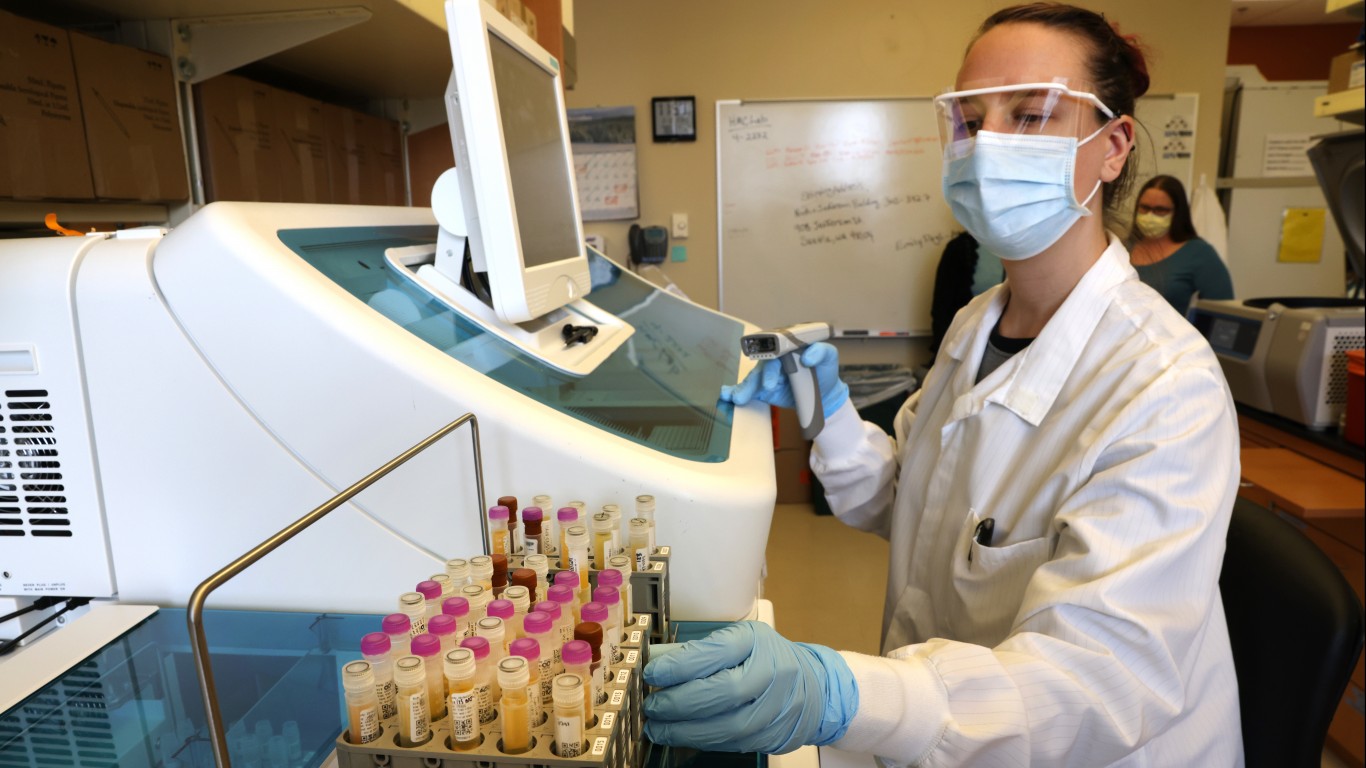
5. Household income: $50,000 – $74,999
> Pct. unvaccinated: 14.0% (Estimated total: 4,671,298)
> Pct. with at least one dose: 85.8% (Estimated total: 28,720,863)
> Pct. with three or more doses: 34.9% (Estimated total: 11,678,138)
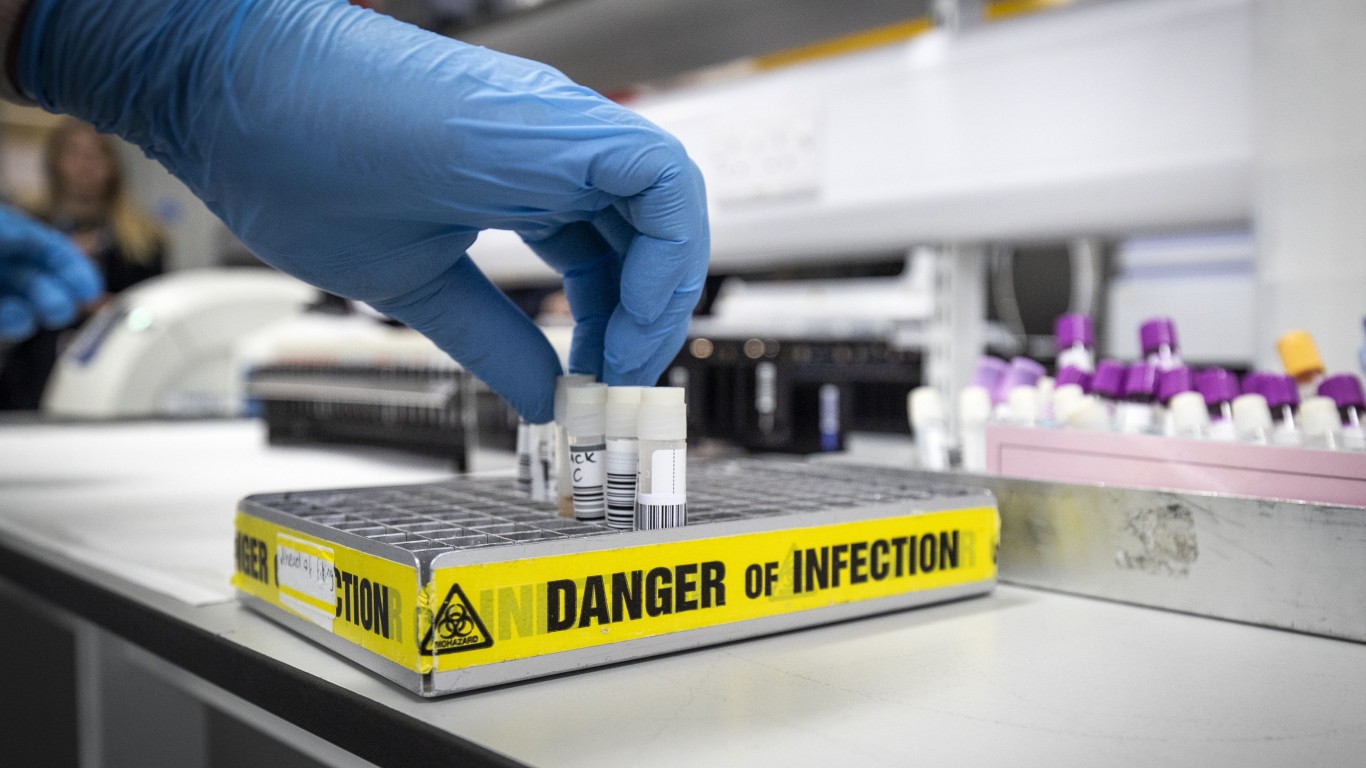
4. Household income: $75,000 – $99,999
> Pct. unvaccinated: 11.7% (Estimated total: 2,788,294)
> Pct. with at least one dose: 88.0% (Estimated total: 20,926,885)
> Pct. with three or more doses: 38.1% (Estimated total: 9,072,361)
[in-text-ad]
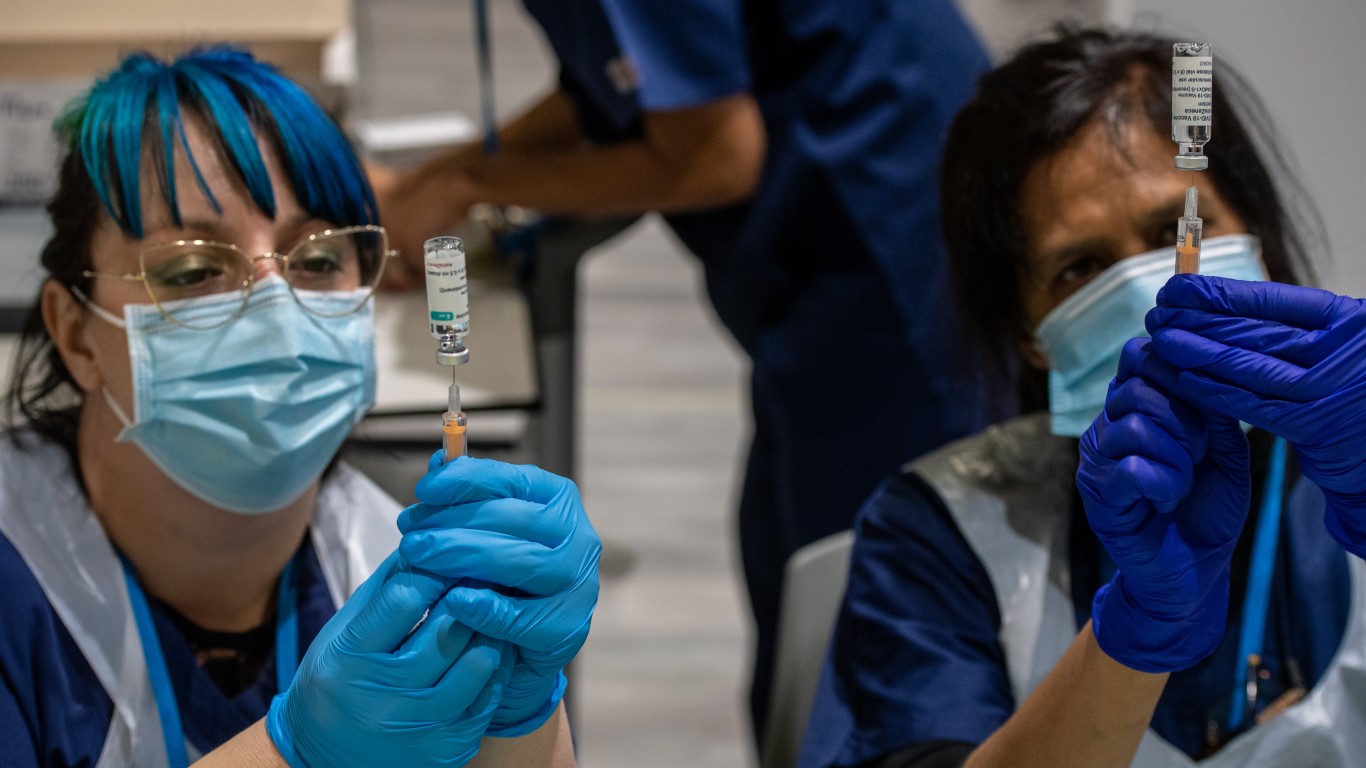
3. Household income: $100,000 – $149,999
> Pct. unvaccinated: 9.7% (Estimated total: 2,682,463)
> Pct. with at least one dose: 89.8% (Estimated total: 24,837,335)
> Pct. with three or more doses: 42.8% (Estimated total: 11,835,679)
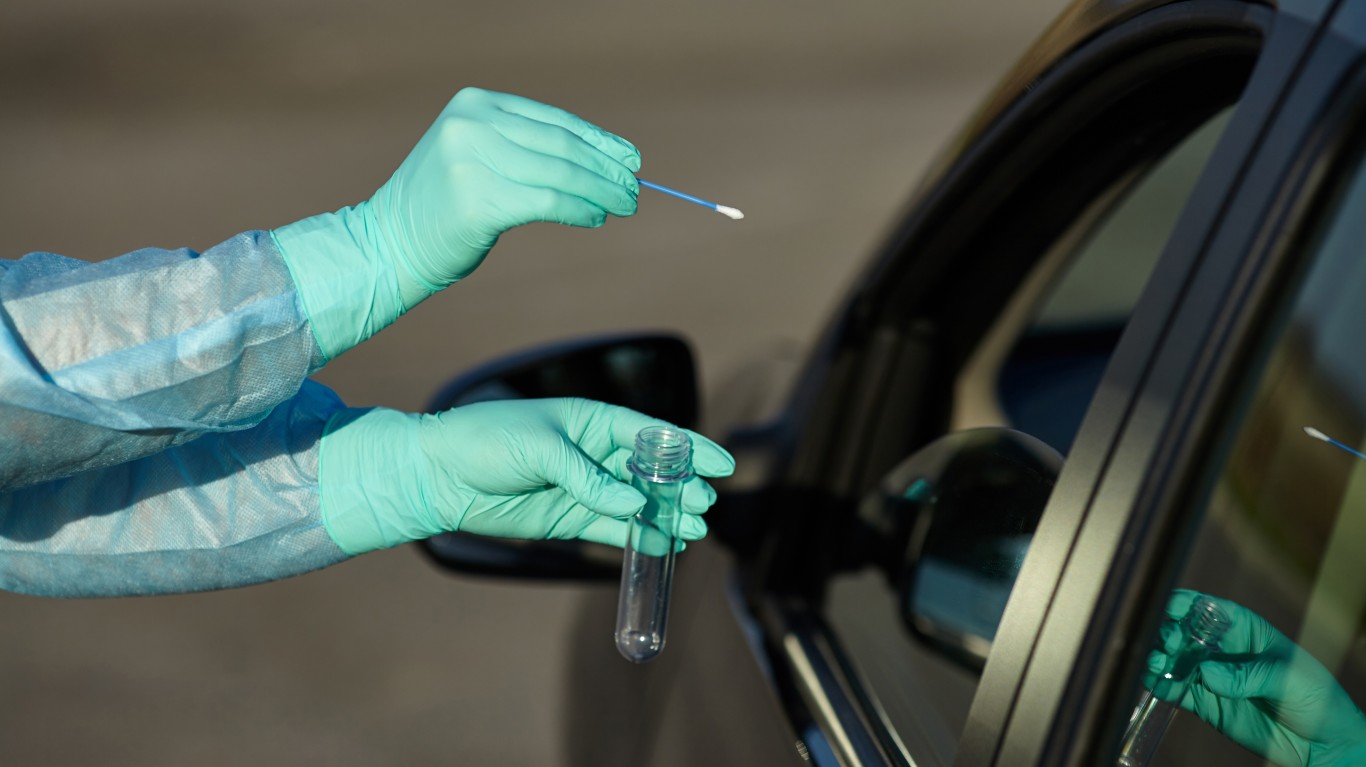
2. Household income: $150,000 – $199,999
> Pct. unvaccinated: 7.7% (Estimated total: 964,143)
> Pct. with at least one dose: 91.8% (Estimated total: 11,451,674)
> Pct. with three or more doses: 48.5% (Estimated total: 6,048,609)

1. Household income: $200,000 and above
> Pct. unvaccinated: 5.5% (Estimated total: 778,824)
> Pct. with at least one dose: 94.2% (Estimated total: 13,262,953)
> Pct. with three or more doses: 54.3% (Estimated total: 7,647,041)
Credit Card Companies Are Doing Something Nuts
Credit card companies are at war. The biggest issuers are handing out free rewards and benefits to win the best customers.
It’s possible to find cards paying unlimited 1.5%, 2%, and even more today. That’s free money for qualified borrowers, and the type of thing that would be crazy to pass up. Those rewards can add up to thousands of dollars every year in free money, and include other benefits as well.
We’ve assembled some of the best credit cards for users today. Don’t miss these offers because they won’t be this good forever.
Flywheel Publishing has partnered with CardRatings for our coverage of credit card products. Flywheel Publishing and CardRatings may receive a commission from card issuers.
Thank you for reading! Have some feedback for us?
Contact the 24/7 Wall St. editorial team.
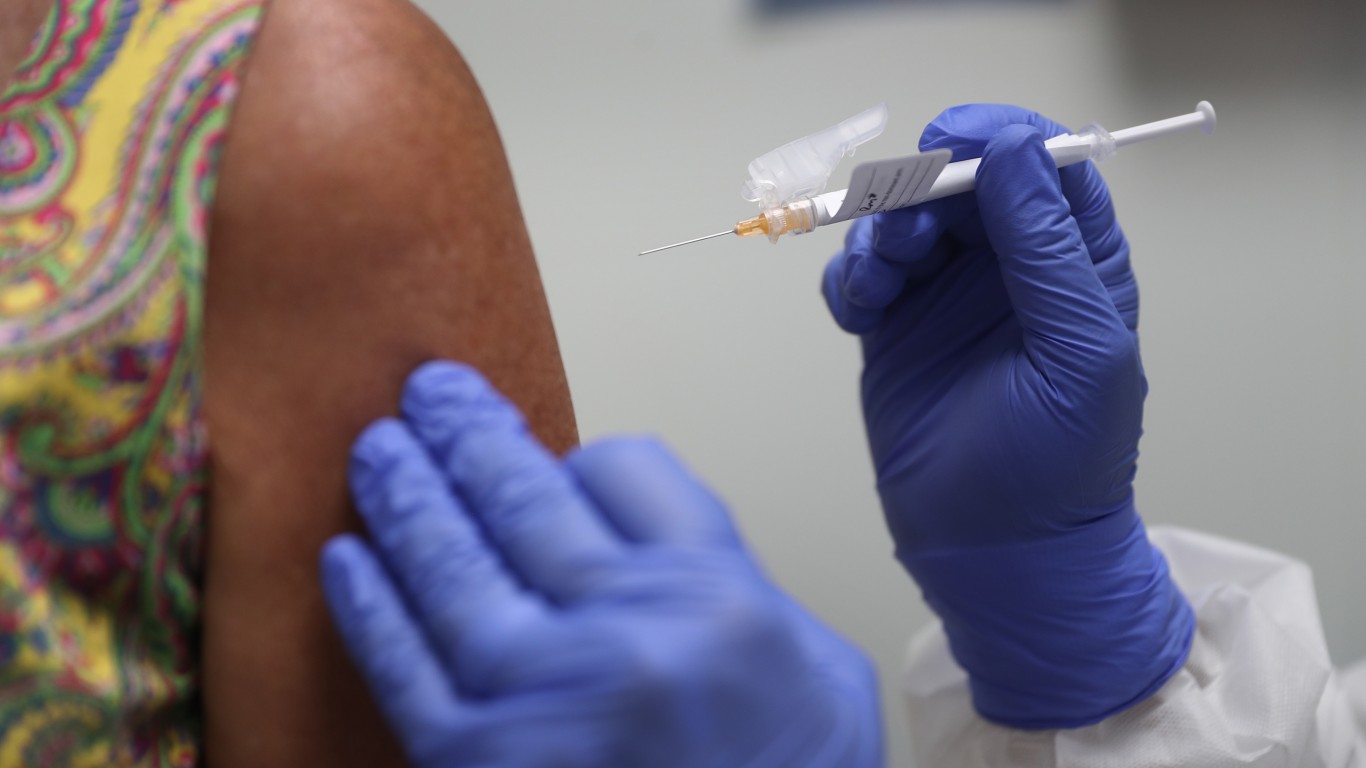 24/7 Wall St.
24/7 Wall St.